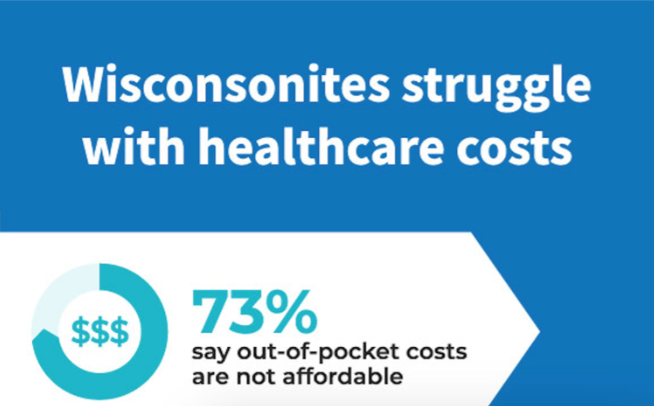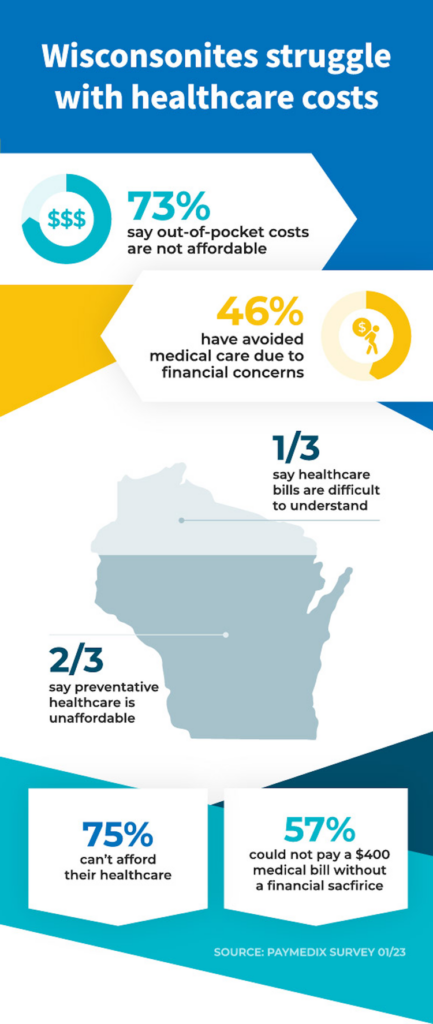
Employees and employers agree that health care is a crucial benefit. Yet it’s the issue that causes the most stress, confusion and dissatisfaction among patients, employers and providers alike. Many U.S. adults may be just one unexpected medical bill away from debt. According to a recent study, about half of adults would be unable to pay for an unexpected $500 medical bill in full.
Each year, the average household in the state of Wisconsin can expect to receive approximately 125 pieces of mail related to health care billing. That’s roughly 2.4 times each week employees are inundated with papers attempting to explain what they owe, to whom, how much their insurance covers and which providers are charging them which fees. Further, the infamous “Explanation of Benefits” (EOBs) rarely explains anything the average consumer of health care can truly understand. This often leaves them scratching their heads.
According to a recent survey conducted by our organization, HPS/PayMedix, one third of Wisconsinites report their medical bills as being difficult to understand. But this distress gives employers an opportunity to bring clarity and relief to their employees and their families by simplifying the billing chaos.
The situation: Confusion and rising costs compounding care avoidance
Confusion around what they owe isn’t the only factor affecting the average employee today. Confusion rides in the wake of rising health care costs in general. According to research from the Kaiser Family Foundation, roughly half of U.S. adults reported difficulty in affording health costs, while 4 in 10 “have delayed or gone without medical care in the last year due to cost.”
The same is true in Wisconsin, with nearly half (46%) of respondents in our survey saying they had to sacrifice a medical need because of financial concerns and over half (57%) saying they would either need to make a financial sacrifice or delay payment if they received a $400 medical bill. But as total cost of care continues to grow for patients, the effects of care avoidance due to complexity and rising prices are hitting providers as well.
The burden of collection has shifted, and providers are spending more to collect less, deploying new methods of collection that are ineffective. A recent report from the American Hospital Association, predicted that more than half of U.S. hospitals (53%) would have negative margins by the end of last year.
The situation we’re left with is a dynamic where providers, who are seeing their own bad debt increase, are forced to raise prices for those who can still afford to receive treatment. Subsequently, employers are forced to offer higher deductible health plans, in an attempt to cover the additional costs associated with their coverage plans. Employees, who are already saddled with rising bills and confusing EOBs, decide the easiest way to deal with this complex situation is to avoid care entirely. This reduces a provider’s patient base, and the vicious cycle continues.
How employers can help address confusion and care avoidance
Fixing the current system requires shifting the financial relationship away from providers to partners like HPS/PayMedix who promise to take inefficiencies out of the system and streamline the payments process for all.
HPS/PayMedix simplifies health care billing, automatically stripping away unnecessary details and data, while delivering a single consolidated statement we call our “SuperEOB,” that eliminates confusion. This has reduced the amount of paper going into employees’ homes by six-fold and has achieved a “willingness to recommend” rating that is three times the average in the health care industry. Through this success, HPS/PayMedix has earned an NPS score of 75, which is roughly three time greater than the health care industry average of 27.
HPS/PayMedix also allows employees to pay over time, regardless of their credit histories. All employees can be issued credit for all allowed charges up to their out-of-pocket max. We guarantee prompt full payment to health care providers in exchange for giving employees more manageable repayment plans. Not only does a single, consolidated, EOB increase employee satisfaction rates, it improves access to care by alleviating the burden of up-front, in-full payments and rigid collection processes from providers.
Final thoughts
PayMedix is a health care payment solution that guarantees all payments to all providers, credit for all patients, and more importantly, simplicity for everyone. By partnering with a company like HPS/PayMedix, employers can reduce confusion and provide a payment path for employees who need it, making them better informed, more in control of their medical expenses and, most importantly, re-engaged. And with guaranteed payments to providers, providers can get back to what really matters—delivering care instead of collecting dollars.



